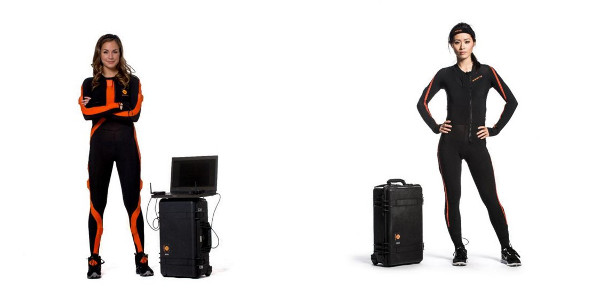Xsens updates MVN inertial mocap line-up
Xsens has updated its MVN line-up of inertial motion-capture suits, introducing redesigned versions of its Link and Awinda hardware and its Studio software, designed to improve the quality of the data captured.
From pre-viz to visual effects
On its launch in 2007, the company’s products have made inertial capture a viable option for smaller facilities, with current users including previz facilities The Third Floor and 20th Century Fox’s Cinedev unit.
Since then, Xsens’ suits have also been used at game developers like EA, and on movie projects that require lightweight motion capture pipelines, such as Double Negative’s work on Paul and Ted.
“Initially [our systems] were used in previz because of the lower quality required, but with movies like Ted, all that is changing,” product manager Hein Beute told CG Channel.
“We want to get away from that previz box and deliver data for productions.”
Improving data capture quality
In terms of data quality, the most obvious change is to Xsens’ MVN Studio software, which now updates at 1,000Hz, not 120Hz, increasing the precision with which key events like an actor’s foot strikes can be detected.
The software can now automatically extrapolate height changes from an actor’s motion, meaning that, for example, capturing an actor running up stairs no longer requires manual clean-up.
Unlike optical capture providers, Xsens doesn’t quote figures for the precision of its data, although Beute contends that the nature of inertial capture – which records angular acceleration directly rather than extrapolating it from a series of static poses – leads to a more ‘organic’ solve.
“[Absolute position is recorded] more accurately on optical systems and always will be, but if you talk to animators, they almost always retarget [the data] anyway,” he said.

Before and after: the original (left) and new (right) MVN Link inertial motion-capture hardware. Changes to the design of the lycra suit makes it easier to insert or remove its wired trackers.
Improved battery life, reduced setup time
The design of the capture hardware has also been updated, most notably for the MVN Link suit, which has been redesigned to make it easier to position its wired trackers.
The process previously required the suit to be turned inside out, which Beute describes as a “pretty frustrating process” that could take up to 45 minutes.
The trackers themselves have been made 70% smaller than the previous-generation hardware, and battery lifespan increased from 2.5 to 9.5 hours.
The Awinda system, which uses wireless trackers strapped on over an actor’s normal clothing, has also been updated, with a smaller reduction in tracker size, and battery lifespan increased from 3 to 6 hours.
New pricing policy
Xsens has now introduced two versions of the studio software. The standard edition exports data via plugins to MotionBuilder, Maya and Unity, as well as in FBX and BVH formats.
To that, the Pro edition adds the option to stream data live to Unreal Engine and CryEngine or export as an AVI or M4V movie, plus support for a reference camera and timecode data.
When combined with the two types of suit, that gives four price permutations, beginning at $12,000 for an Awinda system and MVN Studio software, and rising to $34,000 for a Link suit and MVN Studio Pro software.
According to Xsens, the latter is a reduction of around 30% on previous-generation systems, although the firm currently doesn’t quote full pricing information on its site, instead providing a contact form to request details.
The new MVN Link and Awinda hardware and Studio software are available now.
Updated: The original version of this story referred to the updated products as the ‘MVN2’ product range. The official name is still ‘MVN’.
Read more about the updated MVN motion-capture systems on Xsens’ website
Read full specifications for the MVN Link and Awinda hardware and Studio software
